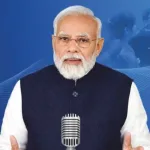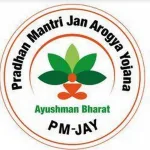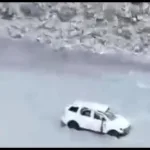Srinagar, Aug 31: From radio and television studios in Jammu & Kashmir to classrooms in Dubai, Dr Seema Sangra has spent over two decades in media and academics. A journalist, educator and feature writer, her work spans advertising, development communication and fashion reporting across India and the Gulf.Now back in Srinagar, she is conducting behavioural change workshops in schools and colleges. In conversation with Rising Kashmir Correspondent Shafat Malik, Dr Sangra speaks about her career in journalism, the changing media landscape, and the purpose of her current initiatives.
Excerpts:
RK: You began your artistic journey with Radio Kashmir Jammu and later developed a longstanding association with Kashmir Doordarshan. What inspired your transition away from the spotlight?
Dr Seema: My connection with AIR Jammu dates back to my school days, where my passion for the performing arts first took shape. During my college years, I started collaborating with producers from Kashmir Television, which opened up incredible opportunities to work alongside some of the most respected names in the industry, Zameer Ashai, Mushtaaque Ali, Ayash Arif, Tariq Javeed, and Bashir Dada. I owe much of my early learning about filmmaking to Zahid Manzoor, who was a major influence. Moreover, I will always be grateful to Mr Parvez Dewan, who mentored me extensively and entrusted me with designing a documentary and brochures for Jammu and Kashmir Tourism.
After completing my graduation, I felt the need to explore the media and content creation space more deeply and systematically. That led me to apply to the Indian Institute of Mass Communication in New Delhi, a premier media institute under the Ministry of Information and Broadcasting. And from there, everything changed.
RK: What brings you back to Kashmir?
Dr Seema: I owe my creative foundation to my formative years at Doordarshan Kashmir, and have always felt a profound connection to Kashmir and its people. This bond compels me to give back, especially to the younger generation. My effort is to guide them in becoming wise consumers of media and to understand the real-world consequences of their digital footprint. I am truly grateful to NGO ACT (Act for Better Tomorrow) for partnering with my university to make this behavioural change initiative a reality in schools across Kashmir.
RK: There is limited visibility of artists and media professionals from Jammu and Kashmir in the mainstream media industry. How do you view this?
Dr Seema: There are several reasons behind this lack of visibility. One of the key gaps is the lack of structured career counselling. Schools must take the initiative to guide high school students toward potential careers in media, helping them understand the possibilities beyond conventional paths.Secondly, although Kashmir has long been a favourite shooting location for filmmakers, this alone doesn’t benefit the local media community. Film shoots tend to support tourism more than they do local talent. What is needed are government-supported platforms such as film festivals, media fests, and symposiums where young people can volunteer, network, and gain exposure to the industry. A well-supported ecosystem can help nurture and channel talent into sustainable careers in the media industry.
RK: Given your diverse experience across media platforms, how do you see the career landscape in digital media and mass communication evolving today?
Dr Seema: Over the last one decade, the media industry has transformed drastically. Today, we have digital media dominance, but traditional media still holds relevance. I see an explosion of opportunities in content creation, podcasting, influencer marketing, events, Online perception management, data journalism, and development communication. The demand for storytellers, content strategists, and digital marketers is higher than ever. However, the key is adaptability; media professionals must keep up with audience behaviour shifts and emerging tech like AI and VR.
RK: Does traditional media like TV and radio still hold relevance for Gen Z?
Dr Seema: Yes, but differently. Please remember that most of the content formats were created by radio way back in the 1930s. Today, we may not have traditional radio listening, and it has moved to car listening only, but Radio is now podcasts, likewise TV is OTT/YouTube. My experience in commercial as well as community media has strengthened my belief that audio-visual storytelling has always worked and will work in the future too, maybe in new formats. Also, to create better new media content, a basic understanding and evolution of conventional media is extremely important.
RK: As you have worked in both commercial and community media. How do these different sectors shape career opportunities for media graduates?
Dr Seema: Commercial media (TV, Radio, Print) teaches immediacy in content creation, research, branding, ability to identify, understand and engage with the audiences, ideal for careers in corporate communication, advertising, and the entertainment industry. While community media builds your ability to tell stories for social impact and grassroots engagement, leading to careers in public policy, advocacy, and social sector communication.
RK: With the rise of AI, influencer culture, and digital platforms, what new career paths have emerged in media that didn’t exist a decade ago?
Dr Seema: Ten years ago, we didn’t have Influencers and relationship managers; brands now hire teams just for this, podcast producers (a booming industry), UX writers who craft micro-copy for apps and websites, data journalists, metaverse content creators for virtual events, NFTs, and 3D storytelling, and crisis communication specialists for digital PR who manage online reputation.
RK: Any suggestions for young media aspirants?
Dr Seema: Absolutely. Start by building a strong foundation in subjects that help you become a skilled storyteller; this is at the heart of all successful media work. To truly excel, you need to understand your content, your audience, and the business side of media, including how to monetise your work. It is crucial to know why people watch what they watch and how one can create content that meets those needs while staying original and authentic.Remember, media is not just about lights, camera, and action or learning software. It is a powerful communication tool and a thriving industry with immense career potential. Approach it with curiosity, strategy, and a willingness to keep learning.






